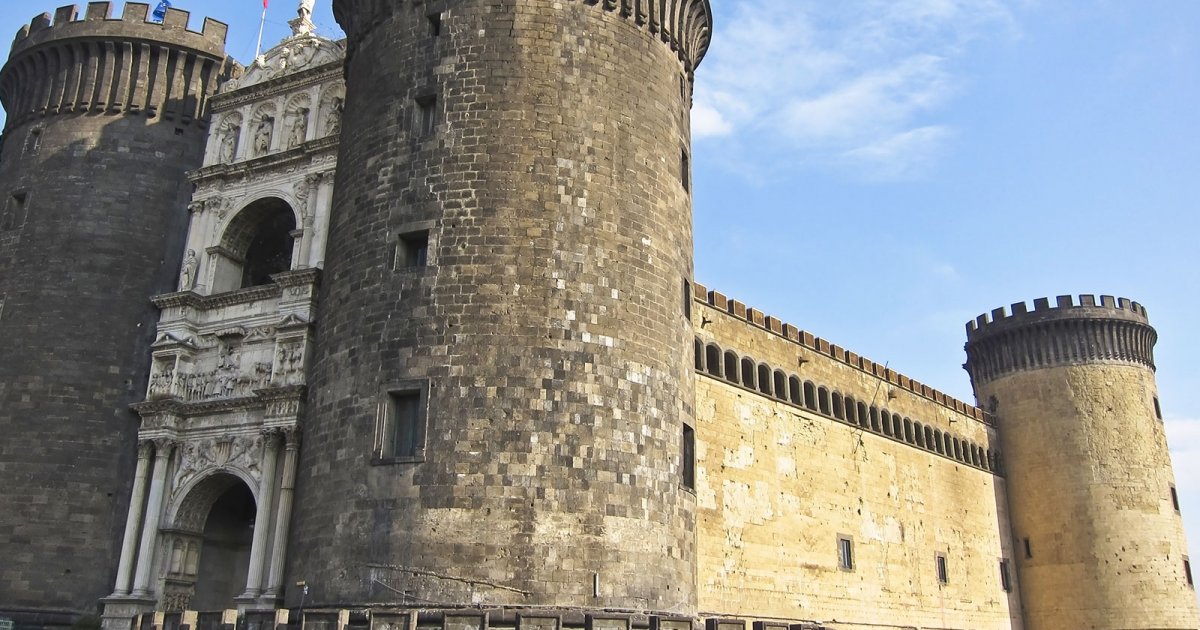MASCHIO ANGIOINO CASTLE, History
 Language: English / USA
Language: English / USA
Hi, I'm James, your personal guide. Together with MyWoWo, I'd like to welcome you to one of the wonders of the world.
Today I'll accompany you through Maschio Angioino, also known as Castel Nuovo, which is one of the most symbolic places in Naples!
Maschio Angioino, Forte Sant'Elmo, Castel dell'Ovo, Castel Capuano... have you ever noticed that despite its festive and cheerful image, Naples is one of the most fortified cities in Italy. These are the names of four magnificent castles in the city's historic center: one is for defending the city walls, one is on a hill, and there are two to protect the harbor. The urban fortifications are added to the perimeter's defense system, which was mostly developed in the Aragonese era, with its fortresses on the islands of the archipelago and the extensive array of coastal fortifications, starting with the unassailable fortress of Gaeta.
Built at the end of the 13th century by King Charles I of Anjou, this beautiful castle stretching out to the harbor was called Castel Nuovo to distinguish it from the previous fortifications.
Today you'll have a hard time recognizing the traces of its original Gothic architecture, which was in the shape of an irregular quadrilateral with four defense towers and high walls with battlements with very narrow crevices; all that remains of the thirteenth-century structure is its base, with a deep moat that completely surrounds it and a large entrance door with a drawbridge.
Look at the grooved base of the cylinder-shaped towers: this was an excellent idea that combined the beautiful decorative effect with the practical function of diverting cannon balls!
The Palatina Chapel also dates back to the same time, which was then overhauled due to fires and collapses.
In 1442 Naples was conquered by Alfonso I of Aragon, who then turned it into one of the main artistic and strategic centers of the Mediterranean. As a tireless promoter of ambitious undertakings, Alfonso transformed the castle into a modern royal residence, a safe fortress, and at the same time a sumptuous palace. Catalan-Aragonese artists were added to Provencal, French, Lombard, and Florentine masters in its decoration.
FUN FACT: there are underground prisons directly below the Palatina Chapel. But some of the detainees disappeared and they couldn't understand why. It was later discovered that a crocodile would enter from an opening in the ground and drag the prisoners out. This fact greatly simplified the death sentences, especially when they didn't want the execution to cause a stir.



